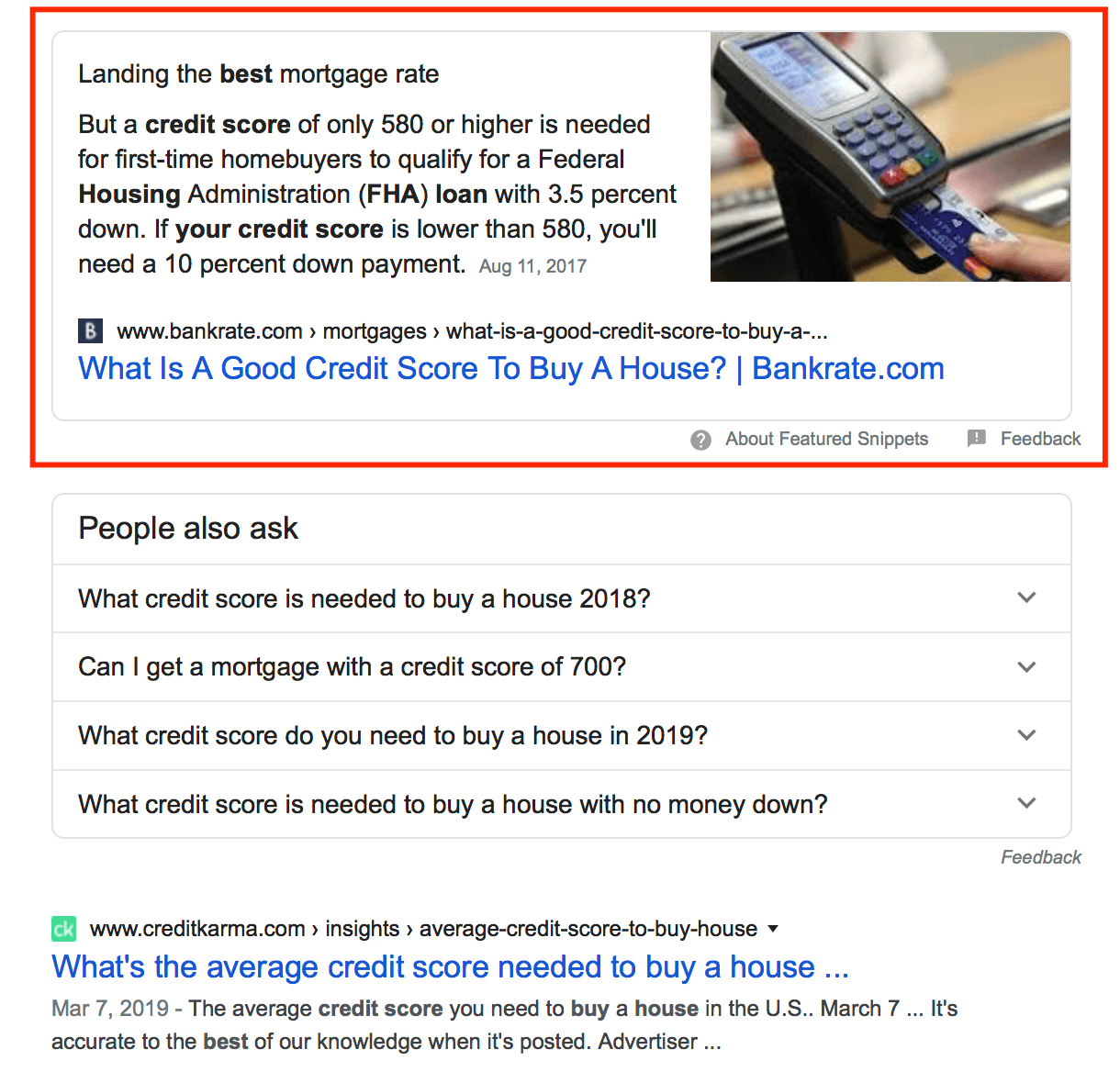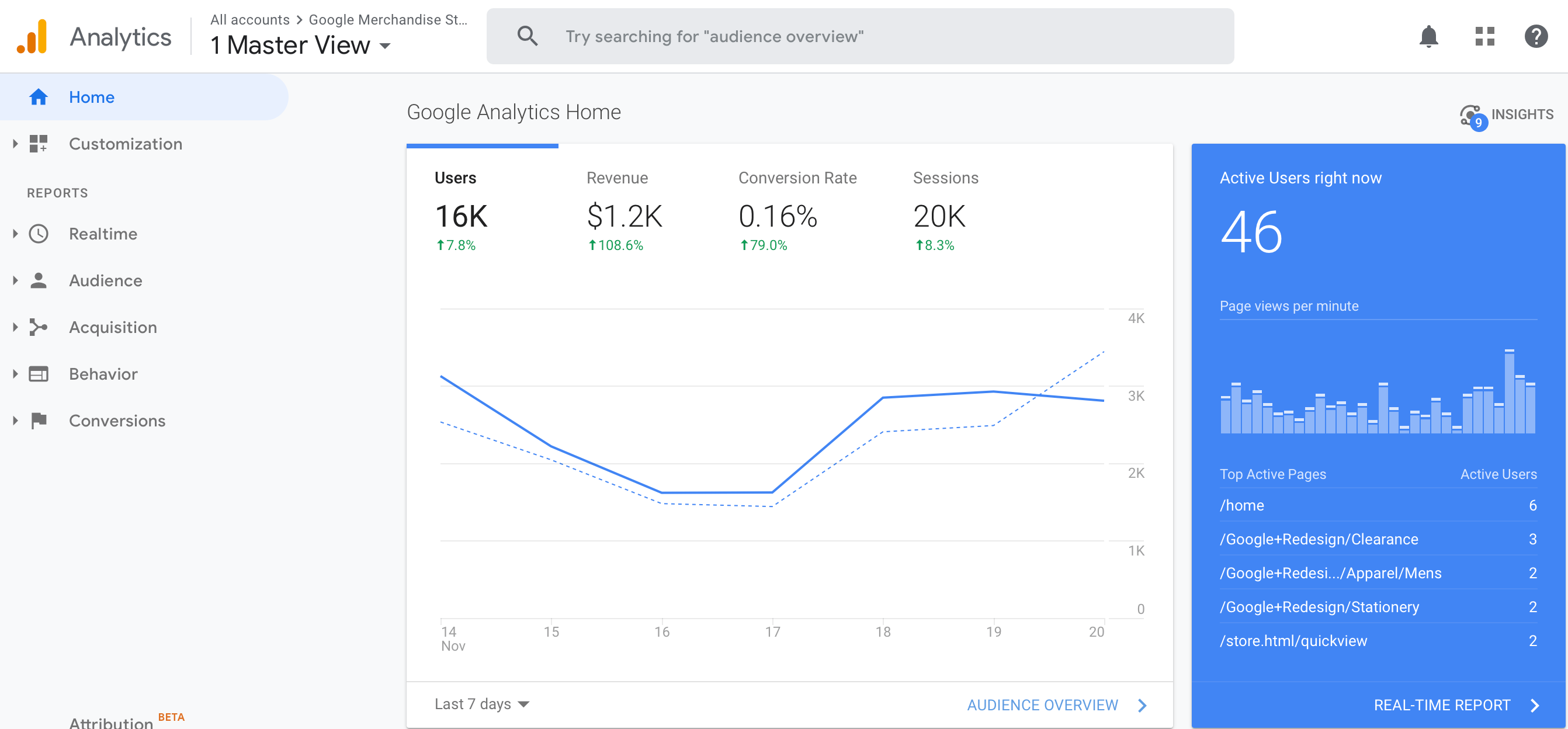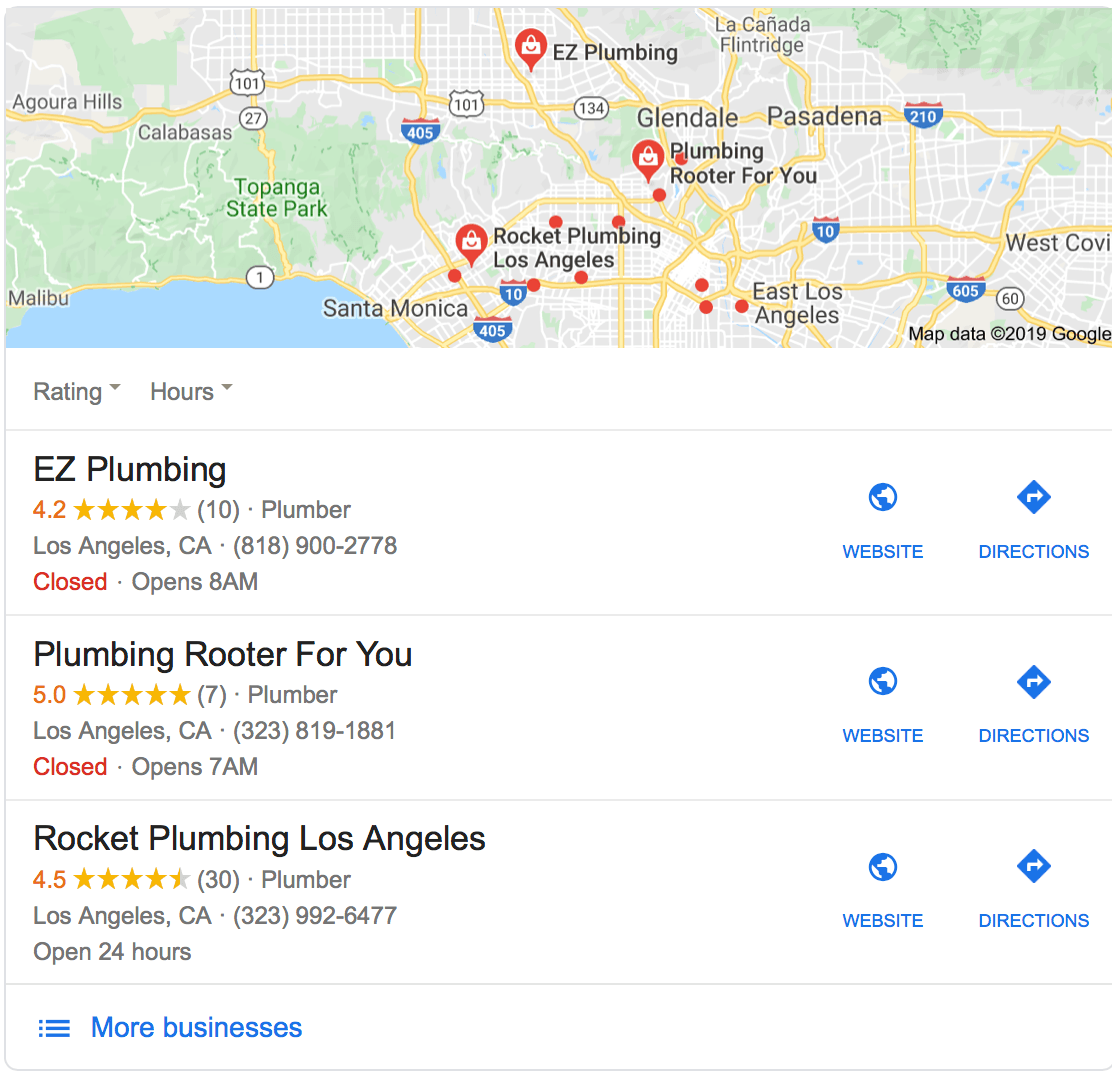-
 14 min. read
14 min. read
-
 Macy Storm
Macy Storm Content Marketing Consultant
Content Marketing Consultant
- Macy is a content marketing consultant with over five years of experience creating content for dozens of industries including home services, recreation, and education. She’s written about every marketing topic under the sun, from SEO to AI to email marketing. Her work has been featured by Search Engine Journal, HubSpot, Entrepreneur, Clutch, and more. In her free time, Macy enjoys crafting, reading comic books, and walking her dog Daisy.
If you’re embarking on your journey into search engine optimization (SEO), you may find yourself bogged down with all the different terms related to SEO.
If you need all this SEO jargon explained, then you’ve come to the right place! On this page, we’ll cover 30 must-know SEO terminology marketers use when talking about this strategy. If you want to stay in the know-how about SEO and other online marketing techniques, subscribe to our newsletter, Revenue Weekly, for the latest information!
Oh, and if you want to achieve the best content by eliminating business jargon, check out our free reference below!
Download Now: Free SEO Jargon PDF
1. Alt text
This is SEO jargon for alternative text. Alt text allows you to add a description to elements like images. When images don’t load, alt text serves as a way for users to understand the picture, even if they can’t see it.
Additionally, alt text helps users who use screen readers. The reader will read the alt text, so users understand what’s on the page. With alt text, you make your site more accessible to everyone.
Keep Reading: Everything You Need to Know About Alt Text for Images
2. Anchor text
Anchor text refers to the text for hyperlinks, which direct users to other pages on the Internet.  When you include links on your website, the anchor text must match the subject of the link. For example, if you link to a page about how to improve your credit score, your sentence may look like: “There are many ways for you to improve your credit score (anchor text) so you can get approved for a loan.”
When you include links on your website, the anchor text must match the subject of the link. For example, if you link to a page about how to improve your credit score, your sentence may look like: “There are many ways for you to improve your credit score (anchor text) so you can get approved for a loan.”
Keep Reading: Guide to SEO Anchor Text
3. Backlinks
When learning about SEO terms for beginners, backlink is a term you will hear repeatedly. Backlinks refer to links you receive from other websites. That means another website links to your site from their site.
As an example, let’s say you wrote a blog post about best practices for boosting your credit score. A bank, like Wells Fargo, could link back to that blog post in their article about how to obtain a car loan when talking about maintaining a good credit score. By linking to your page, they have given you a backlink.
Keep Reading: How to Earn Backlinks in 2025
4. Black-hat SEO
Black-hat SEO is one of the critical SEO terms for beginners to know. This term refers to unethical strategies used to boost rankings in search results. People use these strategies, which go against Google’s Terms of Service, to try and obtain a quick increase in their search engine results page (SERPs) ranking.
Prevalent black-hat SEO techniques include:
- Cloaking
- Keyword stuffing
- Link farms
While some people still use black-hat SEO, search engines like Google have quickly fixed many of the methods used, like keyword stuffing. So, if you’re starting your SEO adventure, stay away from these tactics!
Keep Reading: How to Recover From Google Core Updates
5. Bounce rate
Bounce rate is a Google SEO term you need to know. A metric, bounce rate, looks at how many people visit your site and leave without viewing any other pages or reading the information on your website. When you have a high bounce rate, it signals to Google that your site isn’t relevant to a user’s search.
A high bounce rate will hurt your rankings in search results, so you must create relevant, user-focused pages and use the right keywords for those pages.
Keep Reading: How to Improve Bounce Rate in 2025
6. Canonical tag
A canonical tag is an HTML link element that lets companies inform search engines about duplicate pages. The canonical URL tells Google which page is the original — or the page that you want Google to show in the SERPs. You can even (and probably should) place a canonical URL on the original page, not just pages that are copies.
The tag looks like this: <link rel= “canonical” href=http://website.com/” />
This tag allows businesses to guide search engines to the original page — where they want the rankings to count — instead of a duplicate or copy page.
Keep Reading: How to Do a Technical SEO Audit
7. Conversion rate
Conversion rate is a crucial piece of SEO jargon for beginners to know. When you calculate the conversion rate, you take the number of conversions divided by the number of people who visit your site. Conversions can include numerous actions, from signing up for an email list to buying a product.
Free Tool: Conversion Rate Calculator
8. Crawling
Crawling is the process where search engines comb your pages to index them later. This process helps search engines index and rank your pages in search results. It’s an essential part of SEO because if search engines can’t crawl your site, you will have an impossible time ranking in search results.
Keep Reading: How Does Google Indexing Work?
9. Dofollow link
A dofollow link is a valuable link in SEO. With these links, bots that crawl your site follow the links to the source. Dofollow links are functional backlinks that allow crawlers to visit the source page for a link.
Keep Reading: Nofollow vs. Dofollow Links
10. Domain Authority
Domain Authority (DA) is a comparative metric (created by Moz) to predict a domain’s ability to rank in search results. While it isn’t an official ranking metric, DA offers insight into how well you will rank in search results compared to other companies, like your competitors. 
Keep Reading: How to Increase Domain Authority
11. Dwell time
Dwell time is the length of time someone spends looking at a page after they clicked on it. This time measures from when a user clicks on a link until they go back to the search results or leave the page. This metric is essential to SEO because it helps Google determine if your page is relevant to a search.
Keep Reading: How to Increase Time on Page
12. Featured snippet
The featured snippet is must-know SEO jargon because it’s what every marketer aims for when trying to rank. Also known as Position 0, a featured snippet is a box you see at the top of search results that answers the user’s search or question quickly.  This term is one of the most critical SEO terms for beginners because you’ll want to earn the featured snippet so that you can gain more real estate in search results, as well as decrease traffic to competitor sites.
This term is one of the most critical SEO terms for beginners because you’ll want to earn the featured snippet so that you can gain more real estate in search results, as well as decrease traffic to competitor sites.
Keep Reading: Tips for Earning More Featured Snippets
13. Google Analytics
Google Analytics is a valuable tool for helping you monitor and analyze your SEO campaign. This tool provides businesses with insight into how people engage with their website. You can track metrics, like dwell time and conversion rate, to help you understand what’s working on your site and where you can improve.

Keep Reading: How to Set Up Google Analytics
14. Indexing
Crawling and indexing are two SEO terms that go together. When a search engine crawls your website, it indexes the information it finds and stores it in its database. Based on the data indexed, Google will rank your website in search results.
Keep in mind that your site cannot rank in search results unless it’s indexed.
Keep Reading: How to Get Indexed and Found Online
15. Internal links
Internal links are links to different pages within your site. When you create a new page or piece of content, you link to other relevant pages on your website to keep traffic on your page longer. Internal linking also helps search engines crawl and index pages.
Anchor text and internal links work together to help crawlers understand your page’s context. With anchor text, you help search engines recognize which keywords you’re trying to target on the internally linked page. It helps search engines identify new pages and rank them properly in the search results.
Keep Reading: How to Build Your Internal Linking Strategy
16. Key performance indicator (KPI)
Key performance indicators (KPIs) are measurable values that show how effectively you achieve your objectives. These metrics help you evaluate your success and see if you’re reaching your goals. A KPI can be anything from sales to traffic on your website.
For example, if you set an objective to increase sales by 20%, you would use conversion rate and revenue as your KPIs to see if you achieved your goal.]
Keep Reading: 12 Marketing KPIs to Revolutionize Your Campaigns
17. Keyword research
One of the most critical SEO terms for beginners is keyword research. Keyword research is the process of searching for keywords and phrases to target on your website. Your keyword selection determines who you reach in search results, so conducting keyword research is vital for helping you attract the right people to your site.
Free Tool for Keyword Research: SEO.com
18. Keyword stuffing
Keyword stuffing refers to the overuse of keywords on a page. If you use keywords too often on your page, it will hurt your ranking in search results, and search engines like Google will penalize your site. This tactic is a black-hat SEO strategy you’ll want to avoid.
Free tool: Keyword Density Checker
19. Lazy loading
Lazy loading is SEO jargon for a tactic that businesses use to improve page speed on their site. Page speed is an important ranking factor in SEO because Google wants to deliver pages that load quickly. If your page loads too slow, users will bounce from your site, which hurts your ranking.
With lazy loading, elements don’t load on your page until needed. Your website won’t load these parts of your site, like images, until the user scrolls to them, making it easier for your pages to load faster for readers.
Keep Reading: 8 Steps to Speed Up Your Website
20. Local SEO 3-pack
When you’re looking at local SEO key terms, you’ll often hear local SEO 3-pack come up.  A local SEO 3-pack is a list of three relevant businesses that appear at the top of local search results. The 3-pack contains a preview of a map, along with three Google My Business profiles that fit the search query best.
A local SEO 3-pack is a list of three relevant businesses that appear at the top of local search results. The 3-pack contains a preview of a map, along with three Google My Business profiles that fit the search query best.
Keep Reading: 9 SERP Features You Should Optimize For
21. Long-tail keywords
Long-tail keywords are keywords that contain three or more words, like “carpet cleaners in Harrisburg, PA.” These keywords help you reach more interested leads because they are specific and come with less competition than short-tail keywords.
Keep Reading: How to Find Long-Tail Keywords
22. Meta description
The meta description is the small paragraph of text that appears below your title tag in your search result listing. This short paragraph gives your audience a preview of what to expect when they click on your page.  Even though your meta description isn’t a ranking factor, Google will bold relevant keywords that appear in your meta description in the search results.
Even though your meta description isn’t a ranking factor, Google will bold relevant keywords that appear in your meta description in the search results.
This feature helps users identify if your page matches their search query. 
Free Tool for On-Page SEO: SEO.com
23. Nofollow links
When someone uses a nofollow link, it sends a clickable link to your site, but search engines cannot crawl or visit your website using that link — at least they’re not supposed to, though SEOs debate this feature. Nofollow links tell search engines not to follow the link and that they shouldn’t pay attention to it. These links have no link juice or value passed from one site to the other.
However, they still play a fundamental role in helping you rank in search results. While nofollow links may seem bad, it’s good to have them in your backlink profile. It makes your link profile look more natural to search engines like Google, which helps when you’re trying to rank in search results.
24. On-page SEO
With on-page SEO, you optimize your website to help it rank better in search results and drive more relevant traffic. Some on-page SEO tactics include optimizing your title tag, using your keywords in content, and improving page load time.
Free Tool for On-Page SEO: SEO.com
25. Off-page SEO
Off-page SEO includes the actions you take outside of your site to help improve your ranking in search results. Some off-page SEO strategies include link building, guest blogging, and influencer marketing.
Keep Reading: SEO Checklist for Off-Page SEO
26. Responsive design
Responsive design allows your site to adapt to whatever device your audience uses. This term is a must-know Google SEO term because it allows you to provide a positive experience for everyone who visits your site. Your site will adapt for mobile and tablet users so they can use a version of your site scaled to their device.
Also, mobile-friendliness is an important ranking factor for Google. By integrating responsive design into your website, you’ll create a more mobile-friendly site, which helps you rank in search results.
Keep Reading: 10 Responsive Design Testing Tools
27. Robots.txt
Robots.txt tells search engines which pages it can’t crawl on your site. It does not keep your website from appearing in Google search results. Instead, it helps businesses prevent sensitive pages, like a login portal, from appearing in search results.
Keep Reading: 5 Web Files That Will Improve Your SEO
28. Search engine results page (SERP)
One of the most used SEO terms for beginners is the search engine results page (SERP). This frequently referenced term refers to the pages that appear in the search results after a search. SERP applies to any search you conduct on a search engine.

Keep Reading: How to Perform a SERP Analysis
29. Title tag
One of the most common SEO terms you will see is title tag. Title tag refers to the heading you see for your page in the search results. It’s an essential part of SEO because it helps crawlers understand the context of your page and rank it in search results.
 The title tag plays a fundamental role in driving leads to your site, too.
The title tag plays a fundamental role in driving leads to your site, too.
If you don’t have an engaging and informative title tag, you will struggle to get clicks on your pages and drive leads for your business.
Free Tool for On-Page SEO: SEO.com
30. White-hat SEO
White-hat SEO is a Google SEO term that refers to optimization practices that comply with Google’s guidelines. This technique includes practices like natural keyword integration, fast page speed, and valuable content.
Keep Reading: Your Guide to White-Hat SEO
Now that you’ve had SEO jargon explained, it’s time to stay informed
Now that you have a base knowledge of essential SEO terms, you’re on your way to becoming an SEO pro. Understanding the basic SEO glossary is the first step to becoming a marketer!
If you want to keep learning more about SEO and stay in the know-how, subscribe to our newsletter, Revenue Weekly, for the latest SEO tips and trends.
Don’t miss our Marketing Manager Insider emails!
Join 200K smart marketers for the hottest marketing news and insights in your inbox.
Inline Subscription Form
“*” indicates required fields


-
 Macy is a content marketing consultant with over five years of experience creating content for dozens of industries including home services, recreation, and education. She’s written about every marketing topic under the sun, from SEO to AI to email marketing. Her work has been featured by Search Engine Journal, HubSpot, Entrepreneur, Clutch, and more. In her free time, Macy enjoys crafting, reading comic books, and walking her dog Daisy.
Macy is a content marketing consultant with over five years of experience creating content for dozens of industries including home services, recreation, and education. She’s written about every marketing topic under the sun, from SEO to AI to email marketing. Her work has been featured by Search Engine Journal, HubSpot, Entrepreneur, Clutch, and more. In her free time, Macy enjoys crafting, reading comic books, and walking her dog Daisy. -

WebFX is a full-service marketing agency with 1,100+ client reviews and a 4.9-star rating on Clutch! Find out how our expert team and revenue-accelerating tech can drive results for you! Learn more
Try our free Marketing Calculator
Craft a tailored online marketing strategy! Utilize our free Internet marketing calculator for a custom plan based on your location, reach, timeframe, and budget.
Plan Your Marketing Budget
Table of Contents
- 1. Alt text
- 2. Anchor text
- 3. Backlinks
- 4. Black-hat SEO
- 5. Bounce rate
- 6. Canonical tag
- 7. Conversion rate
- 8. Crawling
- 9. Dofollow link
- 10. Domain Authority
- 11. Dwell time
- 12. Featured snippet
- 13. Google Analytics
- 14. Indexing
- 15. Internal links
- 16. Key performance indicator (KPI)
- 17. Keyword research
- 18. Keyword stuffing
- 19. Lazy loading
- 20. Local SEO 3-pack
- 21. Long-tail keywords
- 22. Meta description
- 23. Nofollow links
- 24. On-page SEO
- 25. Off-page SEO
- 26. Responsive design
- 27. Robots.txt
- 28. Search engine results page (SERP)
- 29. Title tag
- 30. White-hat SEO
- Now that you’ve had SEO jargon explained, it’s time to stay informed

SEO Success with KOA

Proven Marketing Strategies
Try our free Marketing Calculator
Craft a tailored online marketing strategy! Utilize our free Internet marketing calculator for a custom plan based on your location, reach, timeframe, and budget.
Plan Your Marketing Budget
What to read next






